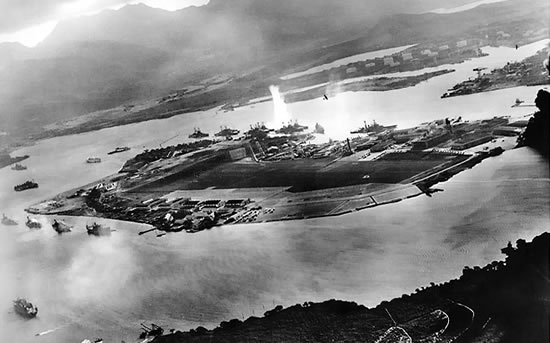Today marks the 72nd anniversary of the attack on Pearl Harbor. As Americans reflect on what President Franklin D. Roosevelt called “a date which will live in infamy,” let us also remember the resolve Americans and the U.S. military showed in response.
The attack killed over 2,400 Americans, destroyed nearly 200 aircraft, and sunk or damaged eight battleships. Japanese officials intended to maim the U.S. fleet to deter America from fighting Japan’s advances in the Pacific, but they failed to account for the resiliency of the American spirit.
Six of the sunken battleships were quickly resurrected from the sea bed, and fortunately, the U.S. aircraft carriers were not in Pearl Harbor that day, thus preserving one of America’s most important naval assets. While the Japanese hoped the attack would bring the U.S. to its knees, Americans responded undeterred. Leading up to the Battle of Midway, Admiral Chester W. Nimitz promised “to meet our expected visitors with the kind of reception they deserve.”
Admiral Nimitz recognized one major strategic weakness in the Pacific Fleet: the U.S. Navy did not have sufficient maintenance capabilities forward deployed in the Pacific. Putting these secondary assets in place proved essential in outlasting the Japanese. In battles such as Coral Sea, Midway, and Tarawa, American aircraft carriers proved to be a decisive factor.
The U.S. Navy today faces similar challenges with both fleet size and maintenance. The shipbuilding budget has been chronically underfunded for years, jeopardizing the production of new carriers, destroyers, submarines, and support vessels. As a result, older ships are kept in the fleet longer and deployed longer without maintenance. Fleet readiness has fallen. For example, mechanical failures forced the USS Essex, an amphibious assault vessel, to cancel numerous deployments. One mechanical failure even resulted in the Essex colliding with a tanker.


No comments:
Post a Comment